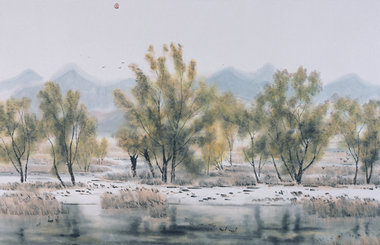The artistic power and glory of Qianlong
By Zhao Xu ( China Daily ) Updated: 2015-12-19 10:02:06
Masterpieces
He spared no effort to bring the masterpieces within the confines of the Forbidden City, the royal abode for successive Qing emperors. It is now the Palace Museum, and it is there that Tian and her colleagues toil away year in and year out sorting through the vast royal collections.
"To get all of these works, a huge amount of coaxing, if not coercion and outright confiscation, must have gone on," Tian says. "And the emperor would presumably have used middlemen whose activities would not have been mentioned in official records."
The cream of the collection later formed his imperial painting catalogue Shiqu baoji. The museum staged a grand exhibition under that title from September until early last month that featured a total of nearly 300 paintings and works of calligraphy, all drawn from the catalogue.
For Qianlong, the custodianship of the world's most fabulous art collection carried a special responsibility: he was expected to be able to differentiate between the masterpieces in his possession and their numerous copies and fakes. To help in that task he had a coterie of art experts as advisers, but in these issues he was keen on having a say in the matter.
These judgments, unlike those he made on court affairs, were not necessarily the final say on the matter, and sometimes he overruled his own decisions.
"When it came to the authenticity and provenance of an ancient masterpiece, Qianlong was a tireless seeker of the truth," says Zhang Zhen, a researcher of Chinese painting and calligraphy at the Palace Museum.
"There were cases where he deemed a much-treasured piece to be authentic, only to have it discredited some decades later, when a similar and better-painted one turned up. And if there was debate, the emperor would get hold of both versions, so that there would be no misgivings later."
|
|
|
|
|
|
|
|


























 Raymond Zhou:
Raymond Zhou: Pauline D Loh:
Pauline D Loh: Hot Pot
Hot Pot Eco China
Eco China China Dream
China Dream China Face
China Face






